NOCOSOMIAL INFECTIONS: the hospital acquired infections
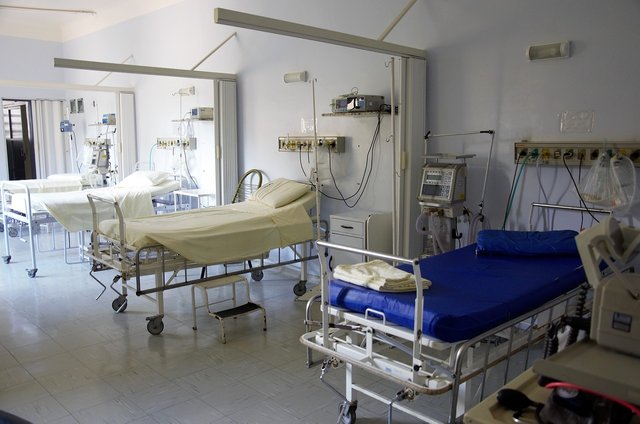
Hello steemians ,it's been a while, due to tight schedule and some academics hustle, writing weekly posed a serious challenge. I was motivated to write this article because of the nonchalant attitude portrayed by some patients and visitors I encounter in the hospital. I believe this will really be of help to both the patient administered in the hospital and those those coming to see their relatives or friends. Join me as I take you through the term Nocosomial infections.
Introduction
The hospital we know generally is a place where apparently healthy individuals and the sick go for treatment or checkup. It is an institution where the sick ones or those who are injured are given adequate medical or surgical care.
Infections that are acquired in the hospital are called nocosomial infections. They are hospital associated infections that develops in a patient after they are admitted to the hospital which was neither present nor in its incubation period when the patient entered the hospital.
The hospital even though is supposed to be an institution where sicknesses and diseases are meant to be cured can turn out to be the place where you can become infected if you are not careful and properly guided. I find it pertinent at this point to intimate you about some of the hospital acquired infections, how to avoid been infected in the hospital and also list some of the various agents or factors that contribute to one being infected in the hospital.
Nocosomial infections usually occurs in the intensive care unit of the hospital. This is a unit in the hospital where serious cases of diseases are handled. It could be highly contagious disease like tuberculosis, etc. It can occur in about 48 hours after the patient is admitted in the hospital or after dischargesource
If one is not careful there is every tendency of becoming infected with disease after visiting a hospital. It can even get worse if one visits a hospital in an anticipation to be cured, but rather acquires new disease that will compound the initial problem.
The hospital is one of the most dangerous places one can toil or play around in, because of the nature of the environment around the hospital, there are many particular pathogenic organisms that are indigenous and particularly inhabit the hospital. This therefore calls for the need to be extremely careful around the hospital environs.

Sources of Nocosomial infection
Mostly what causes nocosomial infections are pathogenic microscopic organisms (organism we cannot see without the aid of a microscope 🔬). Some of these microorganisms include Methicillin resistant Staphylococcus aureus, Candida albicans, Mycobacterium tuberculosis , Clostridium difficile, Streptococcus Pneumonia etc. source
Most of the microorganisms that can cause infection in the hospital are highly resistant to drug treatment, especially the bacteria.
If they by any means get into our body, their effect will be much more deleterious than those acquired elsewhere. Example here is the methicillin resistant Staphylococcus aureus. They are usually very difficult to treat with antibiotics.
The sources of infections in the hospital could be Exogenous (from the environment around the hospital) or Endogenous (from within us).

Endogenous sources
The normal microbial floras of our body are opportunistic (i.e they cause infection only when their host immunity is weak or when they are found in a location entirely differ from their natural habitat). Read more about microbial floras here
These normal microbial floras, for example E.coli which is found in the gut (large intestine) can cause disease elsewhere around or within the body. Most of the endogenous infections are usually caused by wrong surgical procedures, treatment with drugs and therapeutic procedures.
While treating patients some of these bacteria organism are mistakenly or accidentally displaced or removed from their natural habitat into other areas of the body where they have the ability to cause infection in their host.

Exogenous sources
Under this there are many ways through which one can become infected. They include:
•Direct contact: This is one of the major way through which one can become infected. Direct contact with sick people, especially those suffering from transmittable infectious diseases like Tuberculosis, is a sure way of been infected. The transmission can be through hand from the hospital staff or personnel to the patient. Take for example; a nurse whose hands are contaminated with some pathogens could easily transmit an infection to the patient while dressing wounds.
When you enter the hospital environment, the guiding watchword you should have at the back of your mind is that everyone or anything in the hospital is a potential risk factor that can contribute to one been infected and as such, you must be extremely careful and treat everything with caution. You have to be mindful of the person you talk to, hug and shake hands with. Patients with Tuberculosis are highly dangerous because the bacteria, Mycobacterium tuberculosis that causes this disease can easily be transmitted through the air from infected patient’s saliva while talking.
•Contaminated fomites: Fomites are inanimate object capable of carrying pathogenic or infectious organisms capable of causing or transmitting infections to an individual. These fomites include spoons, hospital beds,
Instruments such as surgical blades, knives, and scissors can become infected when they come in contact with the mucous or blood of a patient with infection. When these instruments are used on an apparently healthy patient without proper sterilization, such patient is likely to get infected. Patients with eczema also contribute to the spread of pathogenic microbes especially when the scales on their skin are shed off. They shed most of the skin scales which are very light and easily carried by air around the hospital. These scales containing the microorganism responsible for eczema can be shed on the hospital bed and around the hospital ward when they carried by air.
Not all hospital beds, even though they might look clean are actually free from infectious agents. The blood, mucous or saliva droppings from a sick patient might contain an active pathogenic microorganism organism spores. These spores if by chance are taken up by an individual who decides to visit the sick patient, such person becomes infected. It is much better to avoid hospital bed of a patient with contagious disease.
Catheterization: this is a process that involves the insertion of a tube e.g catheter into the veins or the urinary tract. This procedure is usually carried when there is need to remove fluids like urine in patients that find it difficult to void urine.
A catheter is also used when there is need to carry out intravenous blood transfusion. When these devices are not sterilized, the patient is likely to be infected. Most of the urinary tract infection (UTI) is due to catheterization while septicemia (bacterial contamination of the blood) is due to intravenous catheterization.
While some of the nurses’ move from one patient to the other trying to change catheters, they may forget to clean their hands and as such contaminate these devices. As a patient, you have to be on guard and always request that they wash their hands before touching you. The use of the same gloves for almost all the patient is now becoming a trend in the hospital. This is one thing that must be stopped. Insist on fresh gloves to be used on you.
•Blood transfusion: This is the most common way through you can be infected in the hospital without being in contact with other people. The hypodermic injections used may not be properly decontaminated or sterilized to kill microorganisms like bacteria, virus etc. capable of causing infection in the patient. Even the blood been transfused might be infected with viruses like Hepatitis and HIV and if the blood is not properly screen to detect them, the patient been transfuse with such blood is likely to be infected.
•Diagnostic equipment: Some diagnostic procedures used in the hospital are not totally reliable, even the equipment that are used by the medical personnel on patients. These instruments are usually not decontaminated before use on another patient. Example of these instruments include urometers, cystoscope, cannulas of urinary catheters,
nose cannulas, endoscopes and even most of the blood pressure monitoring devices like the arterial pressure transducers.
Surgical procedures: Surgery performed always and mostly involve cutting through the skin. The skin happens to be the first line of physical defense against any pathogenic organism.
When the skin is cut open, it gives some of the microorganisms such as bacteria normal flora the opportunity to invade the body and have direct access to various tissues of the body where they will cause infection. Most of the post--operative infections i.e infections acquired after surgery occurs when operation has been carried out on the genitourinary, respiratory and alimentary tract. The reason for this is because; most of these ares are inhabited by bacteria floras capable of causing disease.
The explained points above are just few ways through which you can be infected in the hospital. It is just ironical that, the hospital where one meant to be treated happens to be one of the most dangerous places one can be infected if proper care is not taken.

Important factors in nocosomial infection
The immune state of the body
The immune system of our body (the ability of the body to fight against infection) plays a crucial role in the susceptibility our body to hospital infections. When our immune system is down or weak, little microorganisms which, on a normal state won't be able to cause infections now cause infection in the body simple because the immune system has been weakened.
Age plays a critical role in the susceptibility of someone to infection. People at the extremes of ages, such as Younger children and the older adults are more susceptible to infection. In children, because of the fact that their immune system is not well adapted and formed enough to ward off or fight any infection; they tend to be easily infected. Infection with the bacteria E. coli is common in infants that are in the hospital nursery. Older people on the other hand also have weakened immune system and thus are easily susceptible to nocosomial infection in the hospital.
Immunosuppressive drugs
Immunosuppressive drugs are drugs used therapeutically to reduce the immune system ability. Most of the anti-cancer drugs also reduce the immune system. source These drugs are particularly significant in the case of organ transplantation and immunological disease in which there is a need to reduce the concentration or level of white blood cells (the cells that fight infection in the body) also known as leukocytes. These drugs are also used to prevent the rejection of an organ by the host after organ transplantation. Immunosuppressive drugs are given to patients after organ transplantation e.g. heart transplant, kidney transplant etc. so as to prevent the host or the recipient body from mounting an immune response against the new organ transplanted. If these drugs are not given to the patient, he/she is likely to die even after the transplantation because of fatal immune reaction.
Even though these drugs are actually meant for good, they as well have negative effect by reducing the immunity of the patient thus rendering them susceptible to opportunistic infections (infections caused by some microorganisms by taking advantage of the reduced immunological state of the body). Even patients on cancer therapy are also given immunological suppressive drugs. Another factor is burn treatment
Burn victims
Another set of people that are highly susceptible to nocosomial infections are victims of burns. They are mostly susceptible to the bacteria called Pseudomonas aeruginosa - a bacteria organism that is always found on the body of patients who are burn victims. This bacterium is ubiquitous and it is resistant to many antibacterial treatments and it also has the ability to survive in the hospital environment. Other bacteria include Serratia, Staphylococcus and most of the one I earlier mentioned above.
The last on my list is diabetes mellitus
Diabetes mellitus
It is a disease condition associated with the excess accumulation of glucose in the blood. It occurs when the pancreatic cells of Langerhans responsible for the production of insulin are deficient in action. It usually occurs in two situation, first is that; the cells that produce the insulin may be destroyed thus no insulin is produced, second is that insulin is produced but the receptor are not sensitive to the insulin produced. Insulin regulates the level of blood glucose in the body by ensuring it doesn't exceed the normal range compatible with the body system. Patients with diabetes are usually down with immune problem, their immune system is usually weak and as a result of this, they are also liable to be easily infected in the hospital. The major microorganism that are likely to infect them include Staphylococcus Candida.

Prevention of Nocosomial infection
The major key factors in the prevention of nocosomial infection are basically through the outlined ways below:
Surveillance and been careful of the way we interact with people in the hospital. As long as it is a hospital setting, there is every tendency of one being infected. Avoid areas tagged as out of bound to non-staff. These areas obviously might be contaminated with microorganism capable of causing infection. These arrears require special protocols before entrance. E.g wearing of personal protective equipment for example glove, eye goggles, laboratory coat etc.
Never allow medical personnel to use same glove he/she has used on another patient. Insist on new fresh gloves especially if phlebotomy (process of collecting blood from the forearm) is to be carried out on you.
Personal hygiene is another way through which you can prevent infection. After visiting the hospital, ensure you wash your hand with antiseptics and soap or before leaving the hospital. You never can tell, some of these microorganisms are so small that you can see them on your hands or body.
Always bear in mind that you are in an environment where a lot of people have one sickness or the other and as such, comport yourself, talk less reduce handshaking with people in the hospital. Shaking of hands is the one of the easiest way you can be infected if you do not wash your hands properly with disinfectant after contact.
Since you now understand that patients that are under immunosuppressive drugs have reduced immune system, ensure you maintain proper hygiene to prevent any factor that will contribute to disease infection. If you are watching over someone or your is relative admitted in the hospital, do well to ensure and insist that the fomites used on him/her are neat, have not been used on another patient and free from any dirt or germs that can easily trigger infection in the patient. The safety of the sick person should be your utmost importance.

Conclusion
The hospital is an establishment set up to diagnose, Monitor and treatment different types of infection
This calls for utmost care when we are in the hospital; you have to assume everyone and everything in the hospital as potential source of infection. With this ideology, you are atleast safe from any infection disease.
Thanks for reading.

References and further reading
•Medical parasitology 4th Edition by D.R. arora and Brij Bala arora. (page 235)
•nocosomial infections
•Iranian journal of medical science -Nocosomial infection: the definition criteria
•international journal of infectious disease -The impact of hospital-acquired infections with multidrug-resistant bacteria in an oncology intensive care unit
•Health line-what are nocosomial infections
•Indian journal of critical care medicine-Guidelines for prevention of hospital acquired infections
•Medicinet- Medical definition of Nocosomial infections

I am Proudly a member of the steemstem community, follow @steemstem , and @stemng and join on discord server here
Also a proud member of the Bigwaves community, follow @bigwaves and join on discord server here
You can as well also follow @air-clinic if you write medical related post.

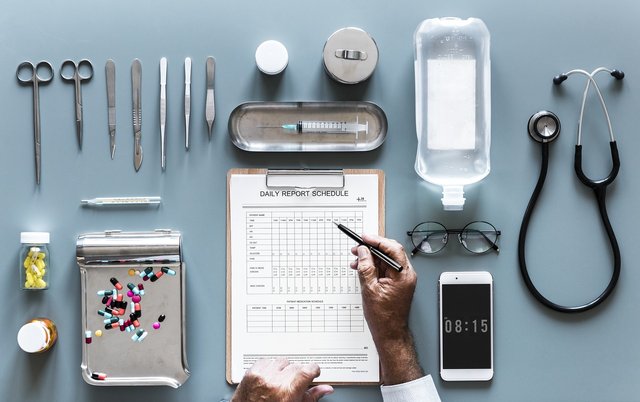
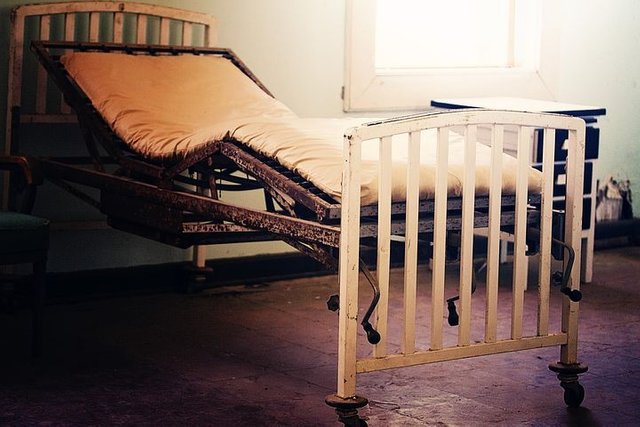

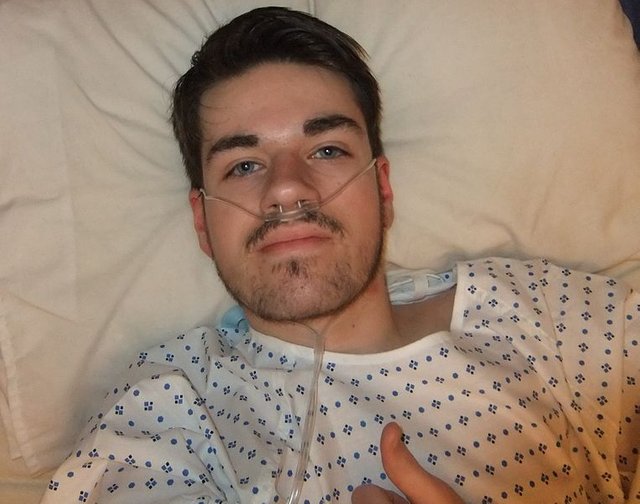
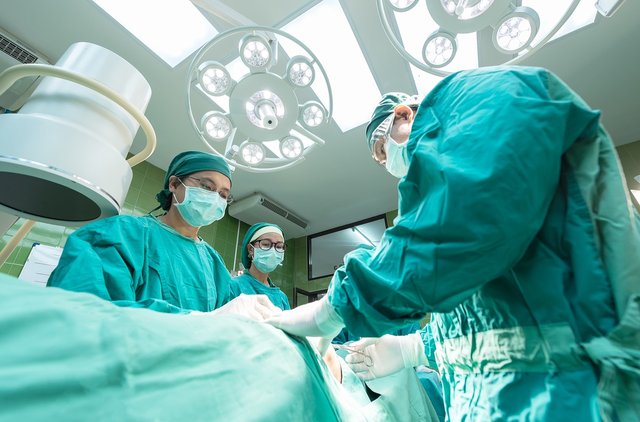
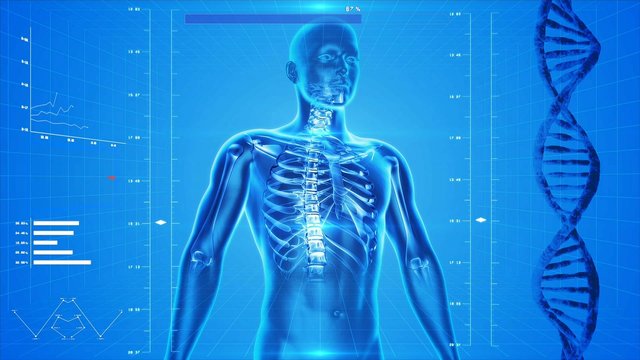
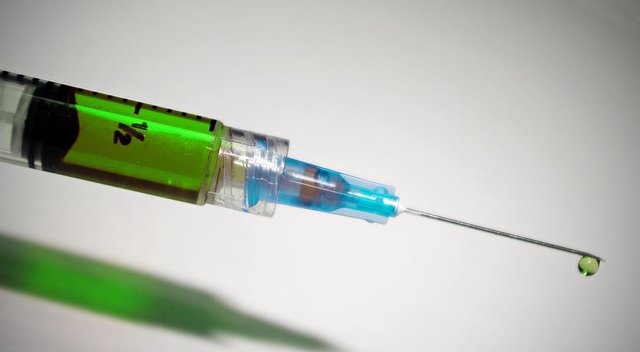
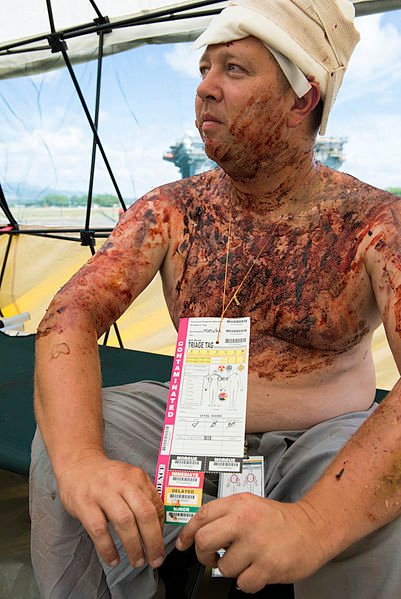
You did an amazing job with this post! Im definitely gonna be very careful around hospitals from hence.
#biwaves
It's a privilege having you around....@mosunomotunde
Been careful is just the best.
Thanks
I was in the hospital for three days about two weeks ago. I had recently written a blog about biofilms--everything looked dirty to me. I think my bathroom at home is sanitized more thoroughly.
It's very hard to tell someone to wash their hands, especially when your vigilance is compromised by illness. This is a great blog. I think hospital personnel are around pathogens so much they become casual about the danger. Visiting family have to stand watch, if their loved one is compromised. Fortunately, my family didn't leave me alone for a minute.
Thank God for that.... Obviously you are highly loved. Taking little things for granted in the hospital is very dangerous.
Thanks for adding flesh to this post
:) Yes, I think I am
Thanks for this educative medical check... The hospital should be the ideal treatment center for diseases, but it seems its also turned out to be a breeding ground for resistant pathogens. Its good you listed out precautionary steps we can take to safeguard ourselves. Nice one!
Thanks for the lovely comments.
Wow... Bro I hope you continue to educate us like this subsequently, I am so excited to have visited your blog this morning, this for the wonderful educative and enlightened post
Thanks for coming around bro...
Congratulations! this post got an upvote by @steemrepo and was manually picked by the curator @yandot to be added on STEEM REPOSITORY, simply comment "YES" and we upload it on STEEM REPO Website.
Want to know more about the Steem Repo project? Contact us on Discord
Yes
Academic hustler...its nice having you back bro...at least now i can be a medical doctor without being a medical student with these articles of yours....it was very educative, well composed and LIT.... wish ya well in your academic hustle bro
Thanks dear.....wishing you the best as well
Thank u for sharing this wonderful information to us....keep it up.
🙏
Academic hustler...its nice having you back bro...at least now i can be a medical doctor without being a medical student with these articles of yours....it was very educative, well composed and LIT.... wish ya well in your academic hustle bro